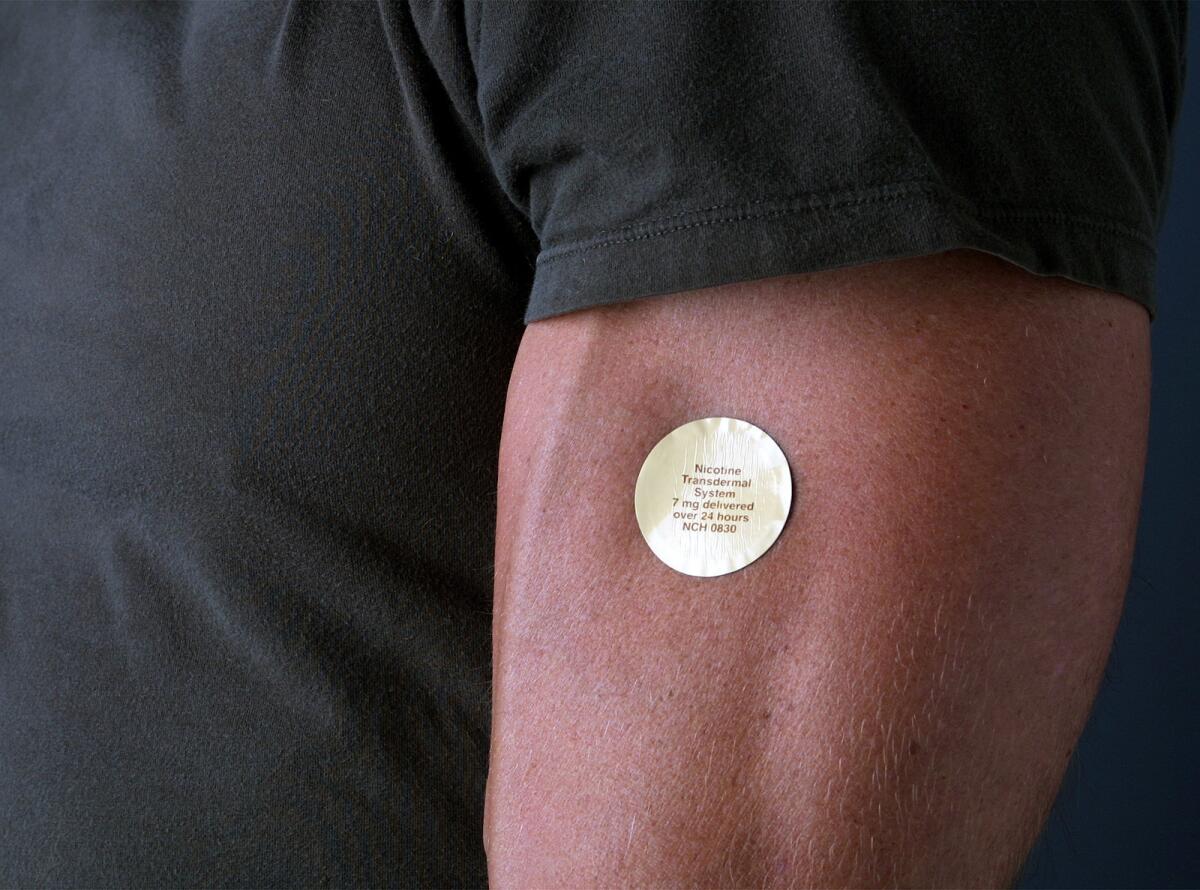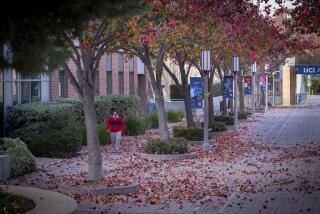How the UC system is making patents pay off

The nicotine patch has been lucrative for UCLA and its inventors there.
- Share via
As they consider ways to improve university revenues, campus administrators point to the life-saving hepatitis B vaccine, the nicotine patch that helps smokers quit their habit and the tasty Camarosa strawberry. Those patented innovations, all pioneered at the University of California, have earned the school system, and the faculty who developed them, more than $500 million.
As a result of these successes and others, colleges around the country are placing more attention and resources on helping researchers obtain patents for their inventions and then market them to private industry for what they hope will be lucrative licensing fees, royalties and stock holdings.
Throughout academia, many colleges are establishing and expanding offices that help with such “technology transfer,” hiring experts to advise faculty to become more entrepreneurial and even holding campus competitions for marketable ideas.
See the most-read stories this hour >>
“It’s definitely the trend in academia,” said Fred Farina, Caltech’s chief innovation and corporate partnerships officer.
As federal research funding declines, universities’ licensing and startups are increasing significantly and adding to the national economy, according to a recent report by the Assn. of University Technology Managers. The survey of nearly 200 universities showed an 11% increase in the number of patents issued in 2014 over the year before, to 6,363, and a 34% rise, to 965, in the number of new commercial products begun at those schools.
Northwestern University topped the income list, at $360 million, a number that was boosted by the sale of its remaining royalty rights to a compound used to control neuropathic pain that is marketed as Lyrica. Other big earners in the survey included New York University, $215 million; Princeton, $142 million; Columbia, $115 million; the UC system and Stanford, each about $108 million; and the University of Texas system, $49 million.
But even administrators and professors involved in such efforts acknowledge the limits to their dreams. First, while many thousands of patented medicines, technologies and agricultural products emerge from campus labs, only a tiny fraction make significant money, and most often in the pharmaceutical field. And while the few big hits can be astonishingly lucrative, the overall income from these inventions remains small compared with the schools’ overall budgets. In addition, it sometimes requires complicated legal battles to maintain the royalty income.
UC statistics show that UCLA inventions produced the most income in the system in 2014, nearly $39 million; UC San Francisco was second, at $23.3 million; UC San Diego third, about $20 million. They were followed by UC Davis, $11.5 million; UC Berkeley, $6 million; UC Irvine, $5.3 million, and the rest in smaller amounts. In general, that revenue was returned to the campus where the invention was hatched — but after reductions.
UC officials said $58 million in total was left for the campuses after subtracting legal costs, other expenses and the standard 35% given to the faculty inventors. The net amount is a small part of UC’s overall $26 billion operating budget, which includes massive medical centers.
“This is not a financial solution for the woes of the university,” said William T. Tucker, the UC system’s interim vice president for research and graduate studies.
Because much of the research is taxpayer-funded through federal grants, the main goals are public service, improving health and aiding the economy, he said. For example, the nicotine patch, while lucrative for UCLA and its inventors there, is thought to have saved many thousands of lives by helping people quit smoking, officials say.
Since the arrival of Janet Napolitano as UC president in 2013, the system has more aggressively pursued commercialization and patents, with the expansion of incubator offices and other steps. And many other universities are doing likewise.
One major reason schools chase patent money is that the resulting income has few strings attached. Most grants and donations are usually earmarked to a particular cause or project. The flexibility in using the funds for various campus needs “is something that makes this money very valuable,” said Farina, of Caltech.
Caltech earned $31.4 million last year from its patents. It has taken such steps as establishing academic classes about entrepreneurship and hiring a staff person to help faculty launch startups. Having such resources are important features in recruiting and retaining faculty, particularly younger ones, Farina said.
Over the last two decades, Caltech’s most successful patents have included a DNA sequencer and an image sensor technology used in most cellphone cameras, he said. The impact of such research, Farina said, can go well beyond revenues. For example, these cameras have deeply influenced social media and world politics as people document such events as birthday parties and protest rallies.
About two-thirds of Stanford’s patent income in recent years has come from one item: a method for making functional antibodies used in a number of drugs that treat rheumatoid arthritis, Crohn’s disease and other illnesses. After earning about $550 million, that patent expired last month, and the income “is going to taper off slowly,” said Luis Mejia, associate director at the university’s Office of Technology Licensing.
Stanford is not panicking and will just keep working on developing and marketing new patents, he said. “Nobody can predict which inventions will be very successful,” he said. “All we can do is plant the seed for an invention that might be commercially successful.”
History there backs up the unpredictable nature of research. Mejia recalls a graduate student in the mid-1990s named Larry Page who sought help in marketing a search engine algorithm he and fellow student Sergey Brin developed on campus. No outside firm was interested. So the university in effect gave them exclusive rights for the Stanford-owned patent in exchange for an ownership share in their startup firm, Mejia said.
In 2005, Stanford sold its shares for $336 million in a little company named Google.
The big hits are not just in medicines and high-tech. UC has strong agricultural research programs that develop and patent new varieties of fruits, vegetables and plants.
Its biggest earners have been strawberries. The most successful has been the Camarosa variety, which has earned UC about $41 million. Consumers may love those berries for their sweetness and durability, but their value to farmers, packers and the university was made public in a recent legal battle over the future of UC Davis’ strawberry research at UC and whether some of it might be transferred to a private company.
UC and the state’s growers reached a settlement this year that both sides say will continue UC strawberry research for at least five years, and may find something that tastes even better.
Twitter: @larrygordonlat
More to Read
Sign up for Essential California
The most important California stories and recommendations in your inbox every morning.
You may occasionally receive promotional content from the Los Angeles Times.











